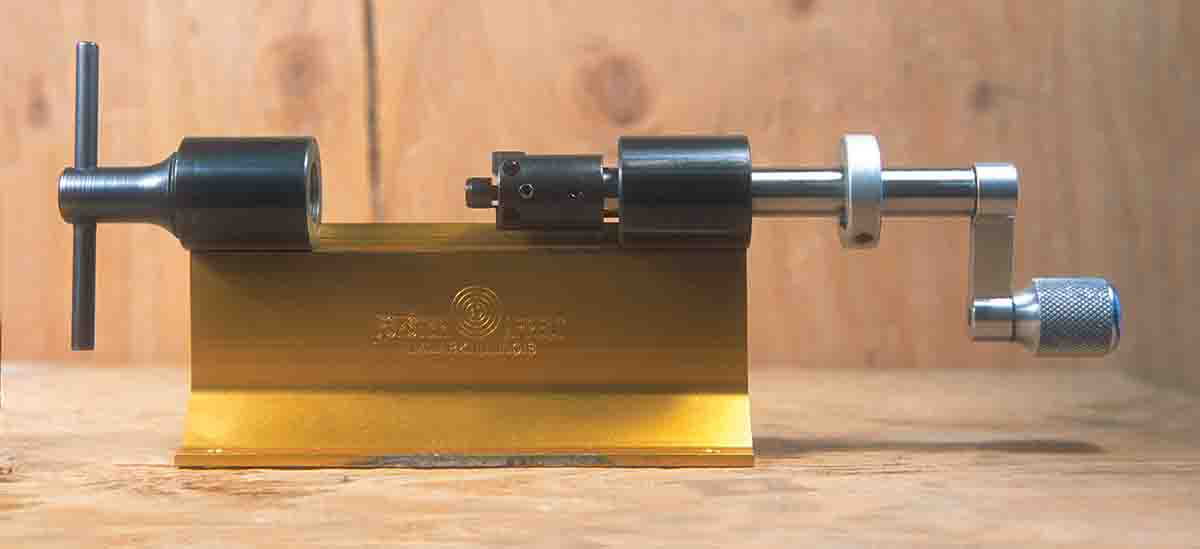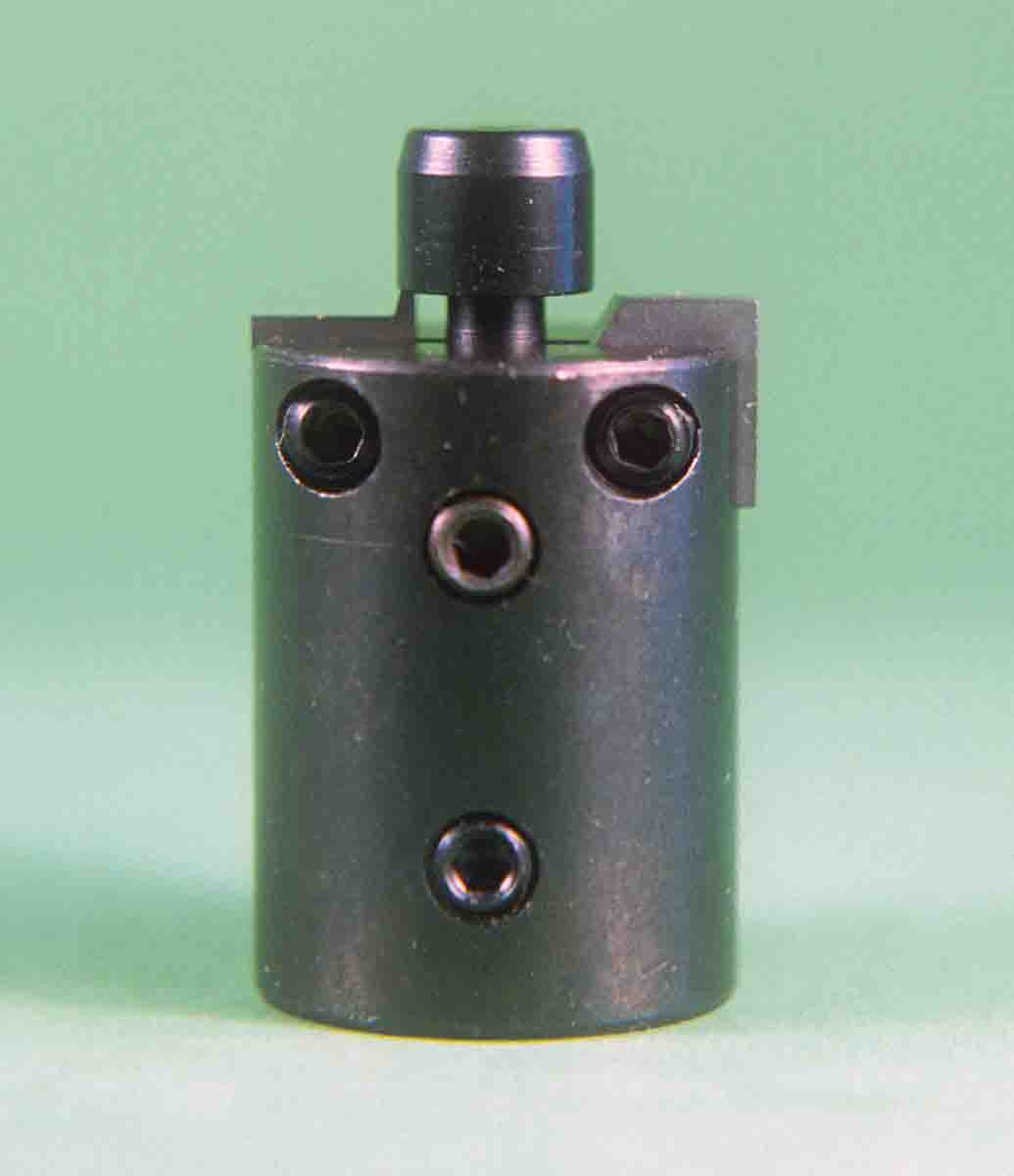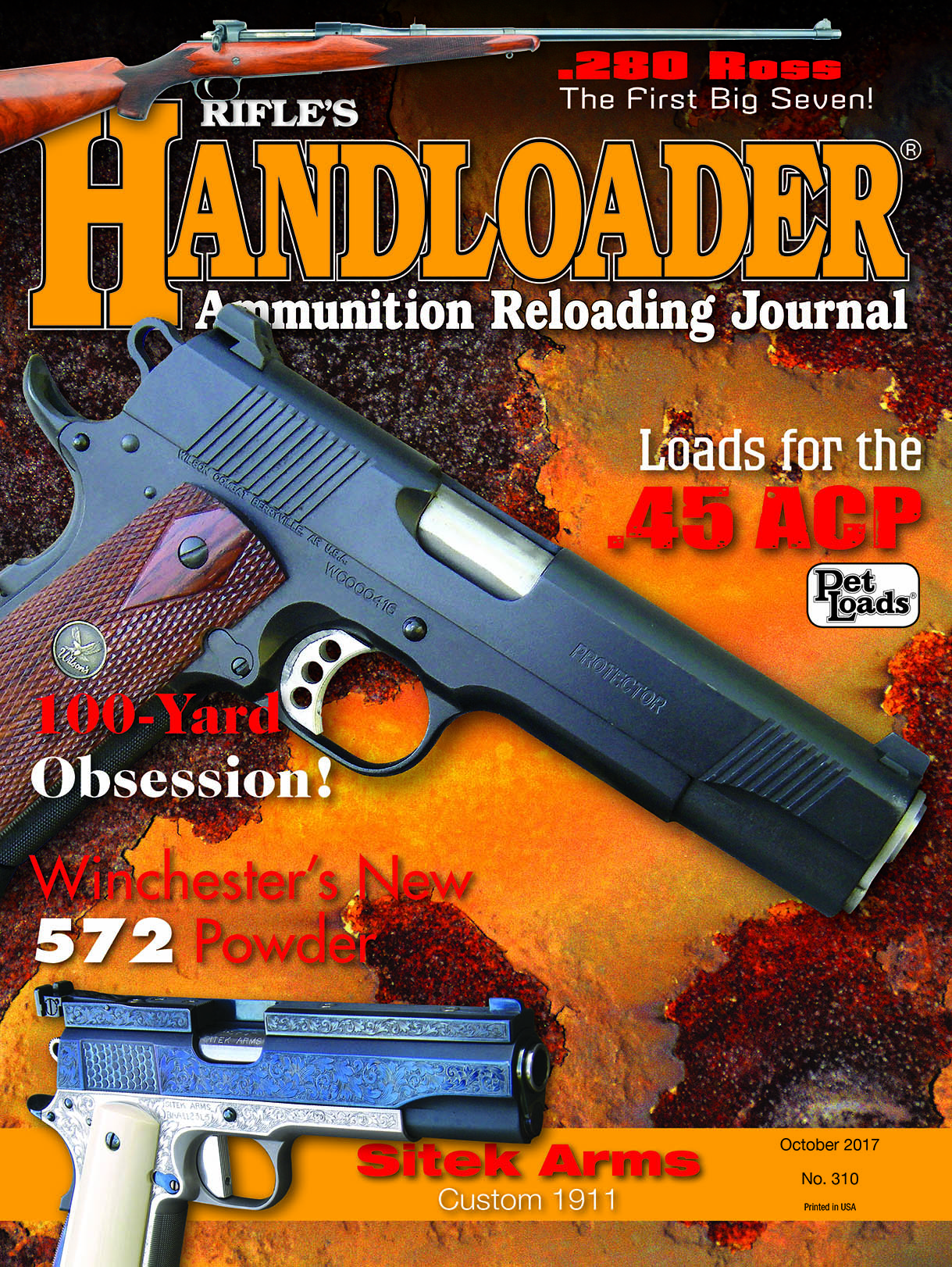Product Test
Forster Products 3-In-1 Case Mouth Cutter
whatsnew By: R.H. VanDenburg, Jr. | October, 17

Forster Products of Lanark, Illinois, has combined trimming, deburring and chamfering into a single tool called the 3-in-1 Case Mouth Cutter. It fits onto the company’s case trimmer cutter shaft and performs all three operations at the same time. To be fair, there are other combination tools on the market, but as they are all proprietary, this one works only with Forster Products’ Case Trimmer.
To understand how the 3-in-1 Cutter works, it behooves us to understand the Forster Case Trimmer. This tool consists of a base, a collet housing assembly and a cutter assembly. There are several iterations. The Original model has a base 53⁄8 inches long, a .490-inch diameter cutter shaft and serves admirably for most trimming needs. The Classic model has a base of 61⁄2 inches, a .552-inch shaft and is designed to accommodate older black-powder cartridges. A third, the 50 BMG Case Trimmer, has a 7-inch base and a .615-inch shaft. There is even a forth with a short base of 45⁄8 inches used with the standard collet and cutter assemblies for trimming 9mm Luger and shorter cases.
The 3-in-1 tool works only with the original .490-inch shaft, but the collet and cutter assemblies may be mounted on any of the bases. The 3-in-1 tool is secured to the shaft by a single setscrew.
The collet assembly consists of a housing that mounts to the base and a collet holder that is threaded and holds the collet

A case is inserted into the collet and the pilot positioned in the case mouth. The collet is tightened to grip the case rim and the cutter blades moved to contact the case mouth. By turning the handle, the case is trimmed and measured until the desired length is achieved. The collar is then tightened, and all future cases will be trimmed to the same length.
My Forster Products Case Trimmer is the Original model with the 53⁄8-inch base. When the collet and cutter assemblies are mounted to the base so that the outer edges of the assemblies are aligned with the outer edges of the base, the tool fits in the box it came in. For almost all my case trimming needs, this is the way I leave it. The distance between the inside edges of the collet and cutter assemblies is 3 inches. The 3-in-1 Case Mouth Cutter is one inch in length and includes its own pilot, so when mounted on the cutter shaft it leaves a working distance of 2 inches. This would be insufficient for most rifle cartridge trimming needs. Mounting the assemblies using the inner screw holes provides an additional 1⁄4 inch on each end, leaving an operating length of 21⁄2 inches – enough for most trimming needs.
Assembled thusly, .30-06 cases could be trimmed from 2.495 inches or longer to the requisite length of 2.484 inches with no difficulties. There was a different “feel” to the operation – understandably, as I was now cutting three surfaces (trim, deburr and chamfer) instead of one. The deburring bevel is set at 30 degrees and the chamfering angle at 14 degrees; the latter is in keeping with many modern bullets. I was all ready to write this review in glowing terms when I happened on a tip in the Forster catalog, which stated that the standard 53⁄8-inch base should be limited to cases up to 2.200 inches when used with the 3-in-1 Case Mouth Cutter. For cases longer than 2.200 inches, the Classic 61⁄2-inch base should be used.
I really couldn’t understand this, so I contacted Forster’s Bob Ruch. We concluded that I was right in being able to trim .30-06 length cases using the 53⁄8-inch base, but to do so I had to back out the collet holder farther when inserting the case than I would have had to if using the longer, 61⁄2-inch base, thereby adding time to the process. Fair enough, but the time saved from not having to deburr and chamfer each case separately more than made up for it many times over. The choice of base size will be determined by the cartridges to be reloaded.
In any review, there are always some limitations or caveats to point out. The Case Mouth Cutter is caliber specific, and when this was written only five choices were available: .224, .243, .264, .284 and .308, although that should suffice for most of us. On the other hand, a .277 would be nice. Another is that the cutter blades are set at the factory to properly deburr and chamfer case necks having a thickness of .012 inches. Instructions are given for adjusting the deburring blade to accommodate thicker neck walls, although the factory setting should suffice for necks having a wall thickness from .011 to .014 inch or so. Should the blades need to be reset for any reason, contact the factory for instructions.
I really liked this tool as it not only saves time but as the deburring and chamfering are done while the case is held securely in place, consistent alignment and cutting depth are assured. www.forsterproducts.com.


